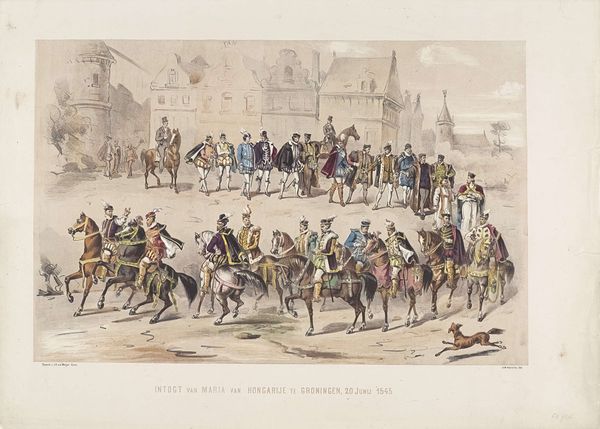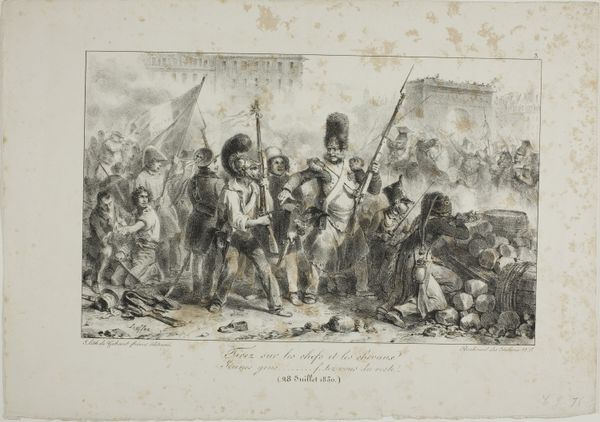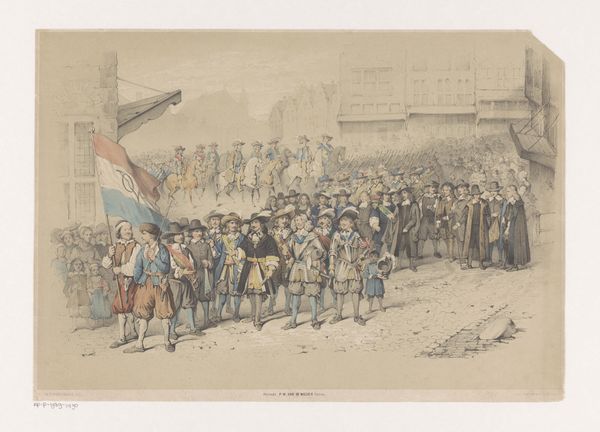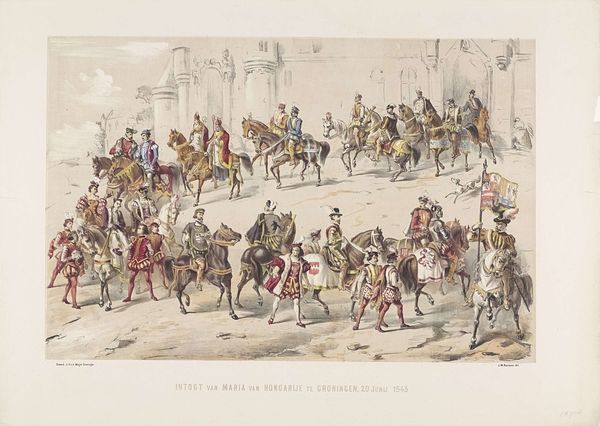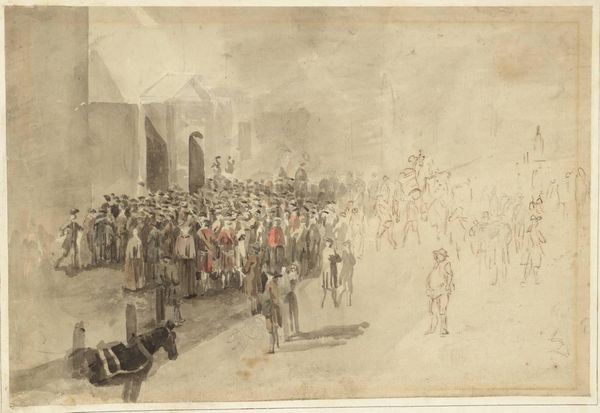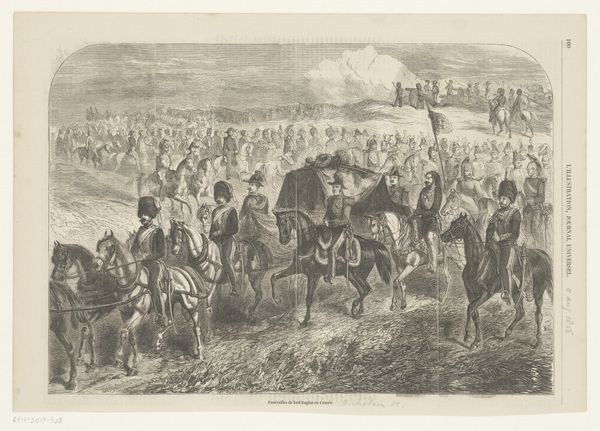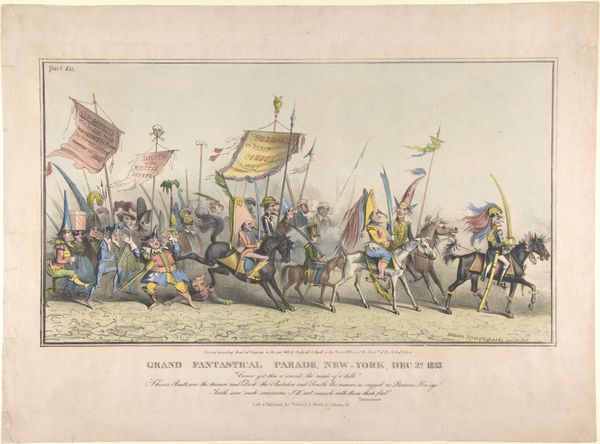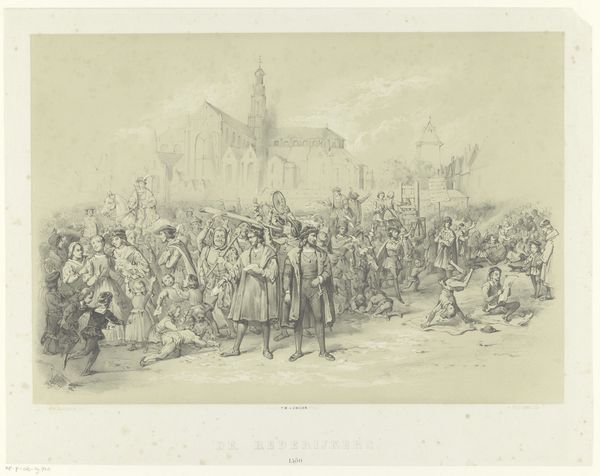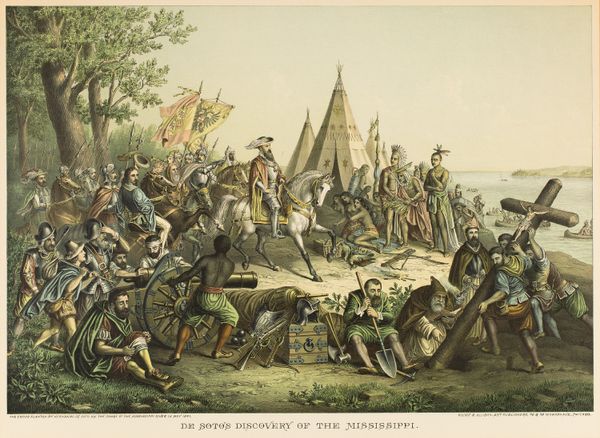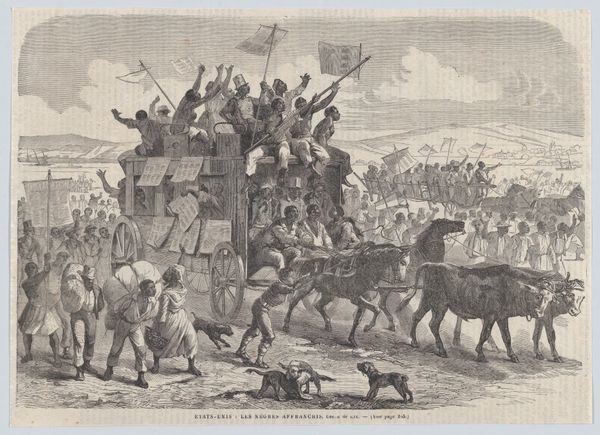
print, engraving
#
ink painting
# print
#
watercolour illustration
#
genre-painting
#
history-painting
#
engraving
Dimensions: height 620 mm, width 870 mm
Copyright: Rijks Museum: Open Domain
This print, titled "Groningse Maskerade," was created in 1864, by an anonymous artist, employing the technique of chromolithography. This is a process involving the use of multiple lithographic stones, one for each color, layering them to create a colorful image. The work captures a historical reenactment, staged to commemorate a royal visit from centuries before. Chromolithography, as a method, speaks volumes about the period in which this print was made. It was a technology that enabled the mass production of images, bringing color and vibrancy to a wider audience, and reflecting a shift towards industrial modes of production. The materiality of the print itself, the paper, the inks, and the mechanical process, also highlight the growing accessibility of art and information at the time. Unlike unique oil paintings, chromolithographs could be reproduced in large quantities, making them a popular medium for disseminating images of historical events and cultural celebrations. The artist's choice of chromolithography places this artwork firmly within the context of 19th-century industrialization and mass culture, challenging traditional notions of art as a unique, hand-crafted object.
Comments
No comments
Be the first to comment and join the conversation on the ultimate creative platform.
